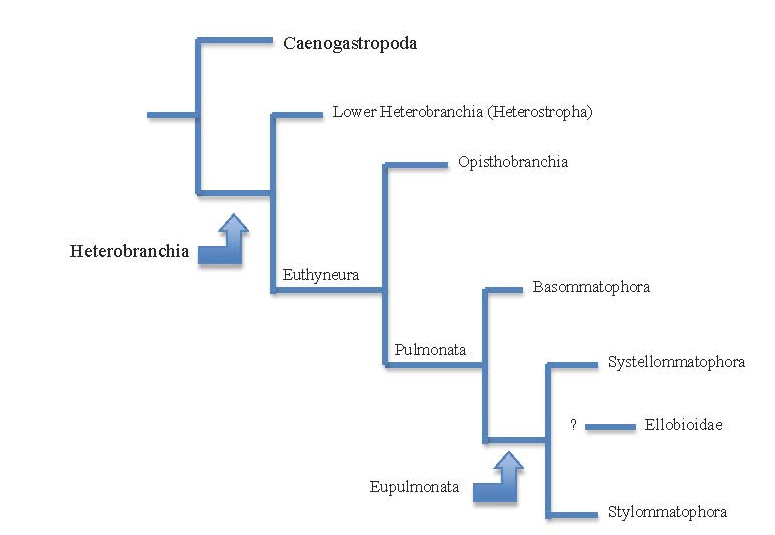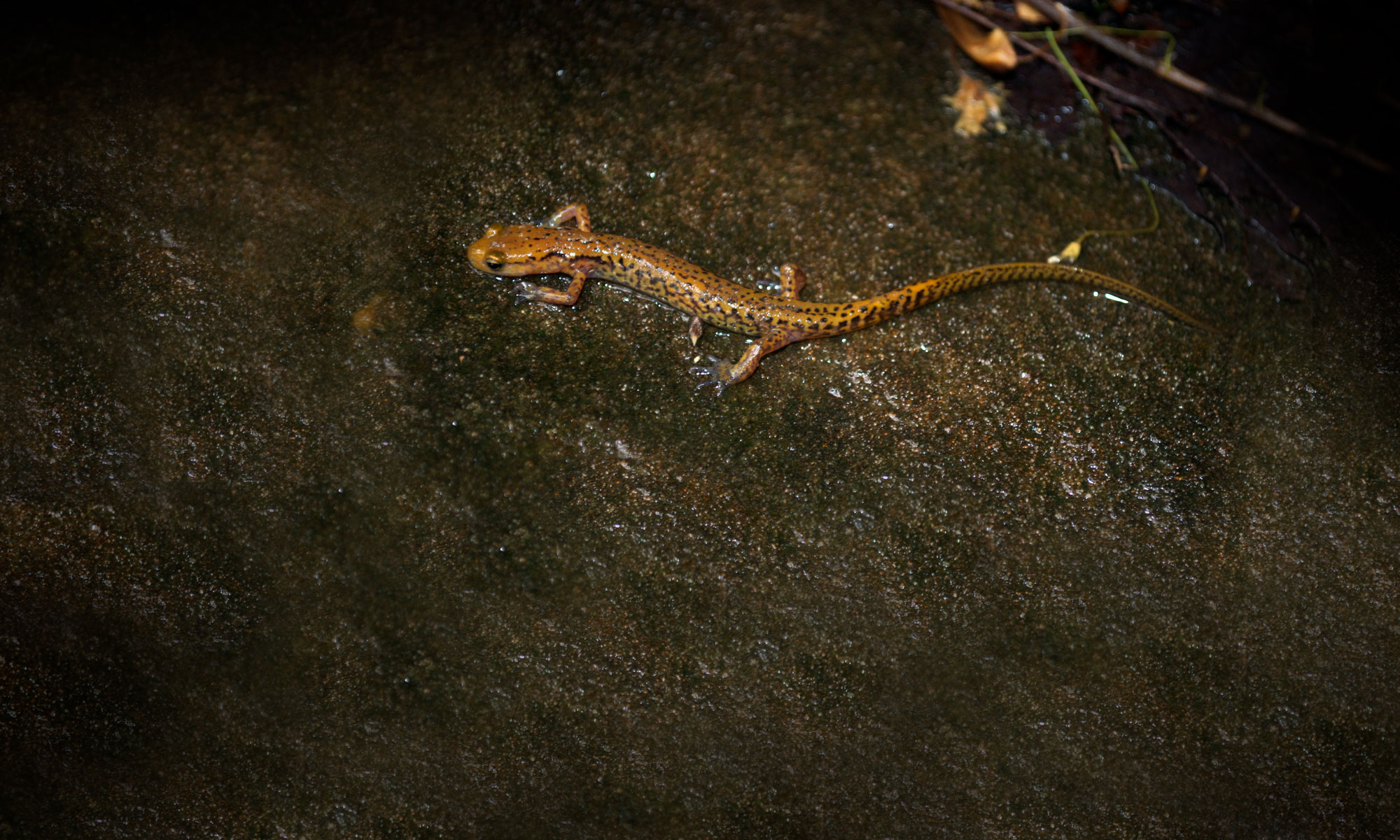The Pulmonata are in one of the six major gastropod lineages, the Heterobranchia. Within the Pulmonata are found the majority of land snails and slugs, over 20,000 species. There are also a few marine species (including the limpet-shaped Siphonariidae) that mostly inhabit estuaries. Pulmonates lack gills and breathe air via a lung (modified mantle cavity). The operculum (a horny covering at the end of the foot used to seal the aperture) is absent in all pulmonates except the estuarine Amphibolidae and the freshwater Glacidorbidae. The Pulmonata are divided into two main groups, Basommatophara and Eupulmonata. The former has no terrestrial species, but includes some of the common freshwater snail families of North America, Lymnaiediae (Pond Snails), Planorbidae (Ram’s Horn Snails), and Physidae (Bladder Snails or Sinistral Snails). Within the Eupulmonata are the majority of land snails and slugs. The eupulmonates are further divided into two groups, Systellommatophora and Stylommatophora and four families of uncertain phylogentic position. The only terrestrial species among these four families are in the Ellobiidae. The only terrestrial members of the Systellommatophora are in the families Veronicellidae (Leatherleaf Slugs) and Rathouisiidae. The remaining pulmonate, terrestrial snails and slugs are in the Stylommatophora, with over 20,000 species in 100+ families.


